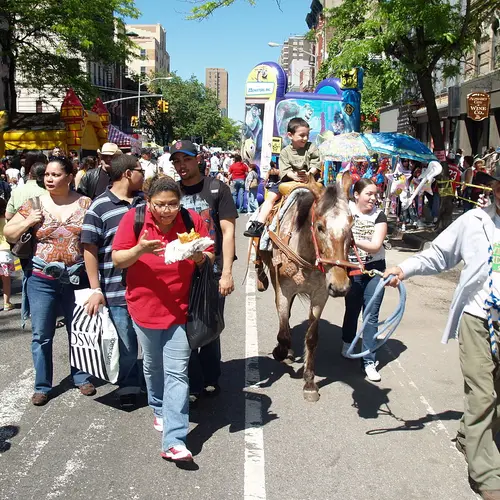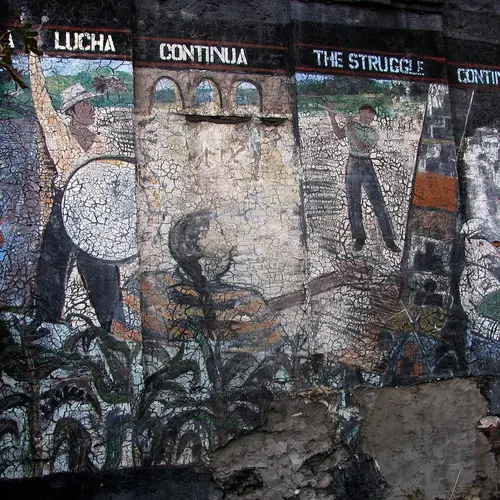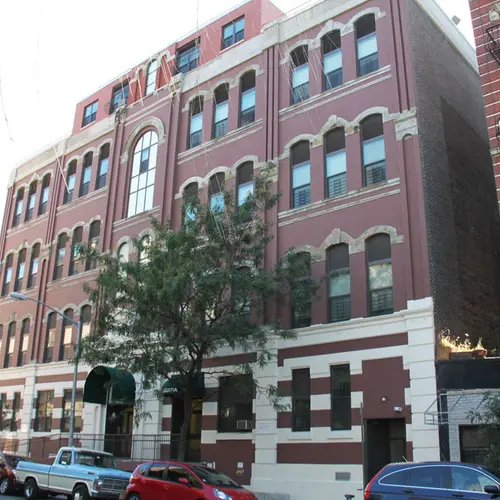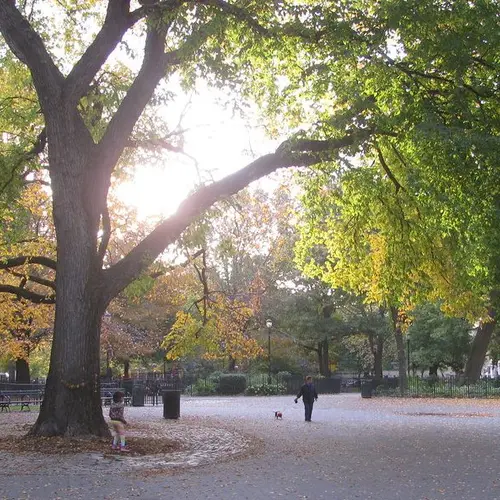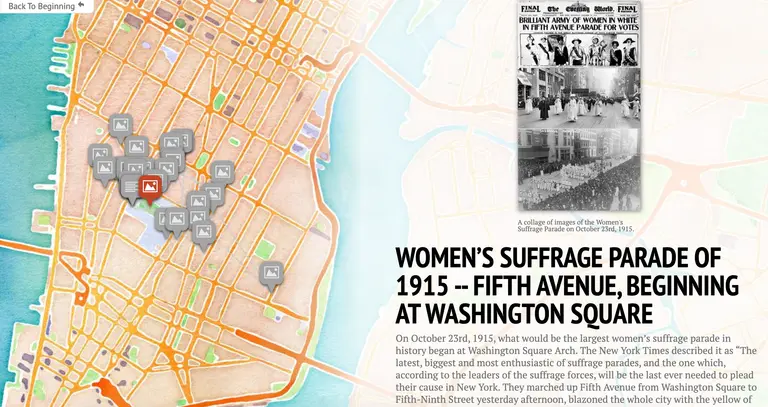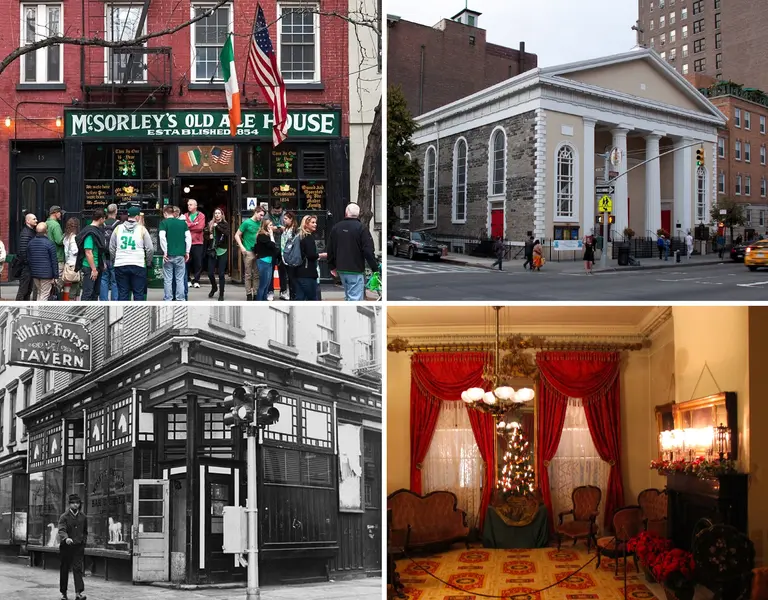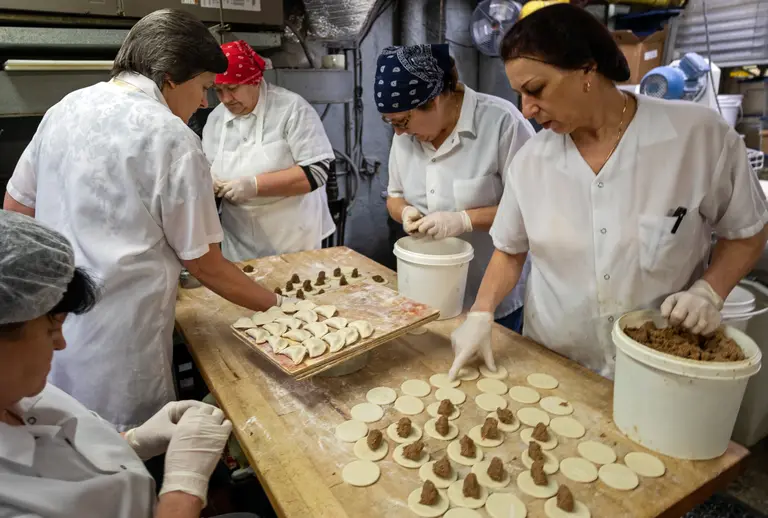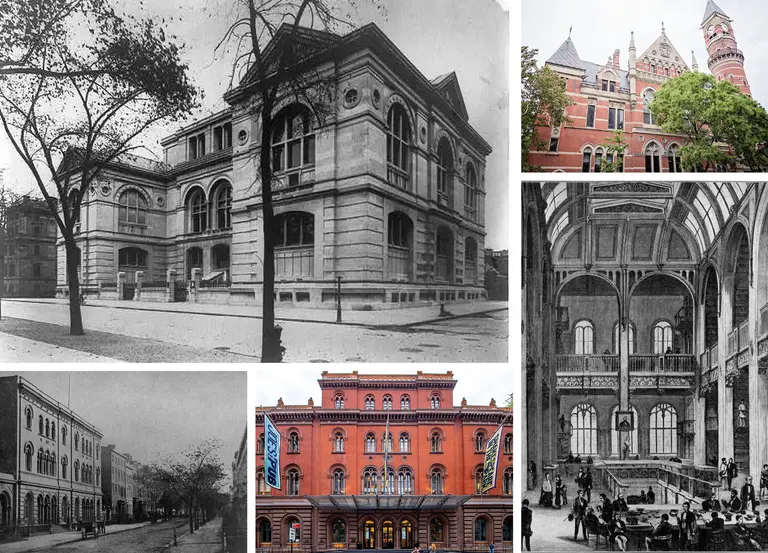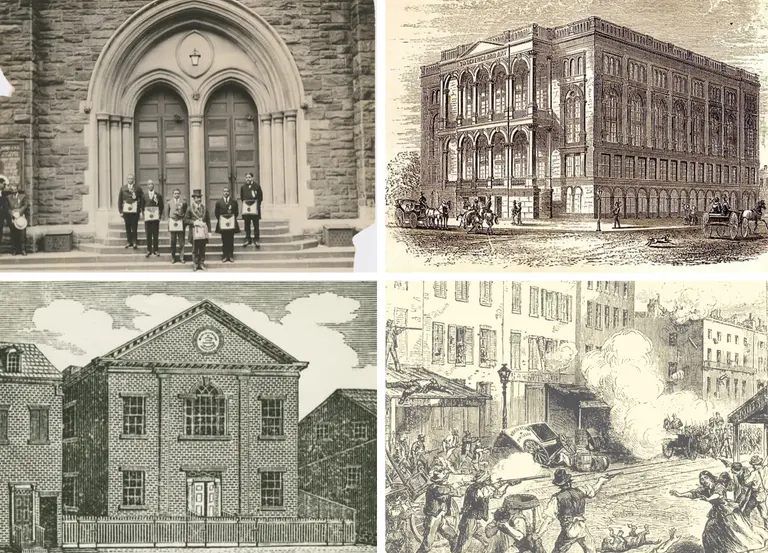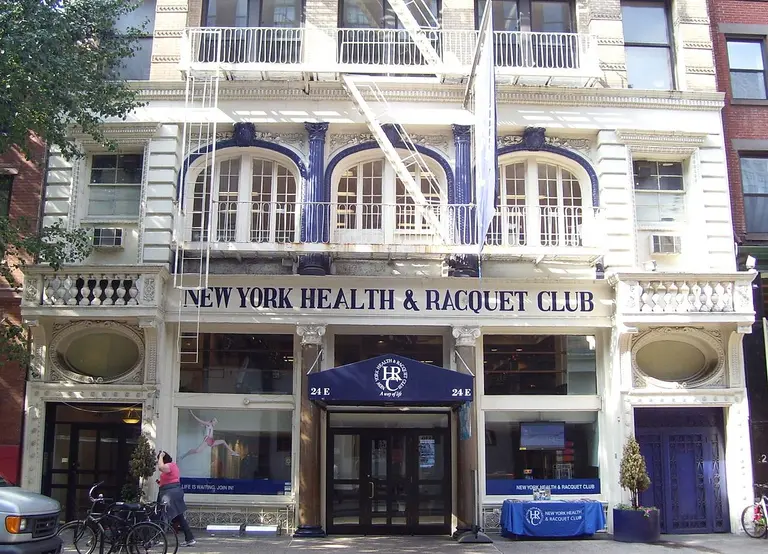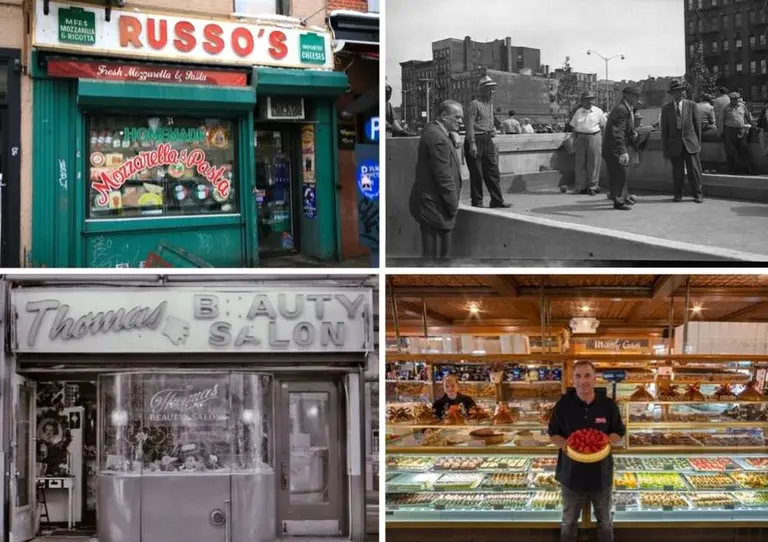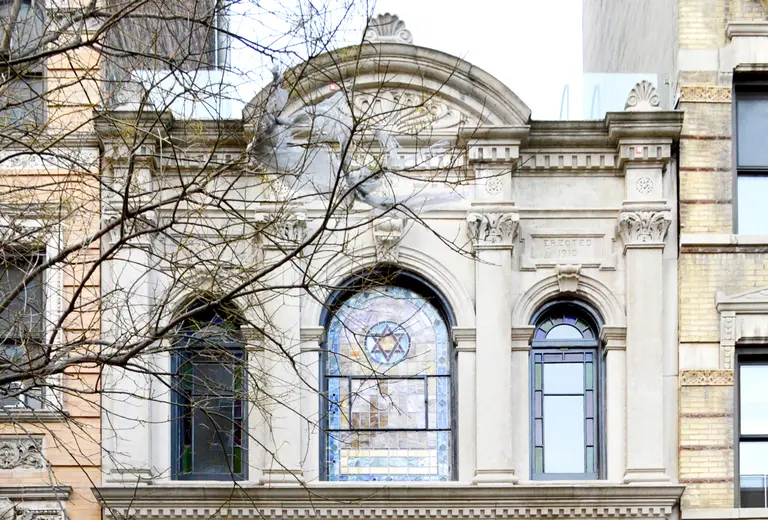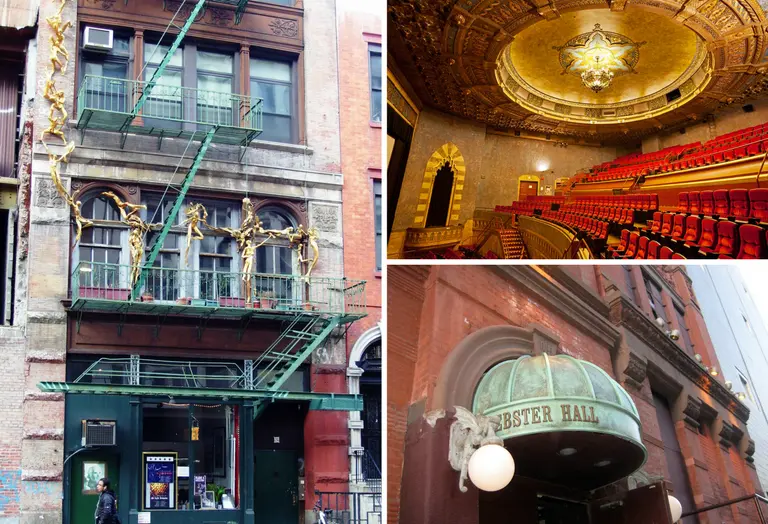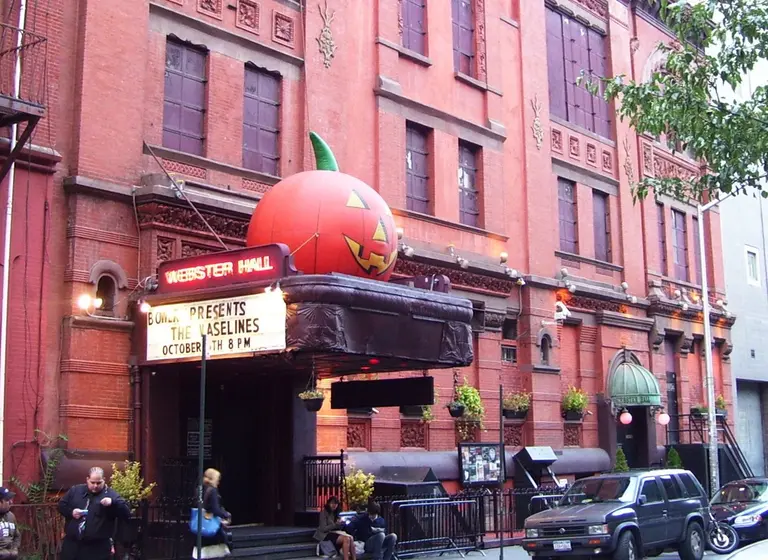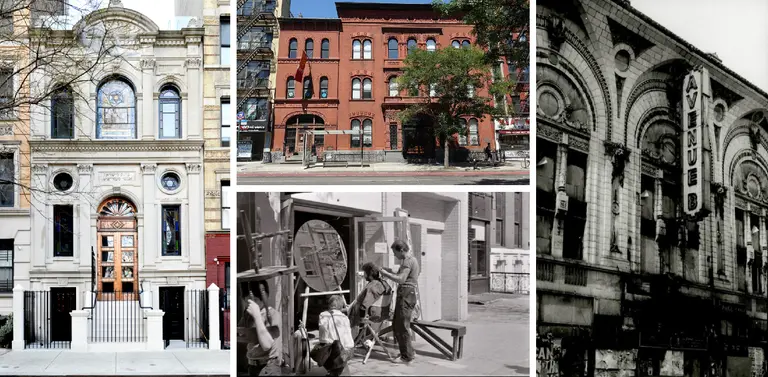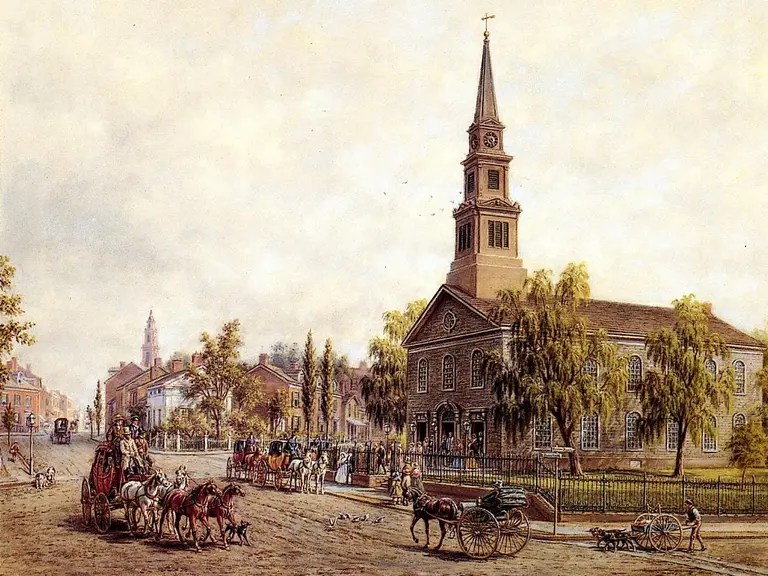The social and cultural Puerto Rican history of the East Village
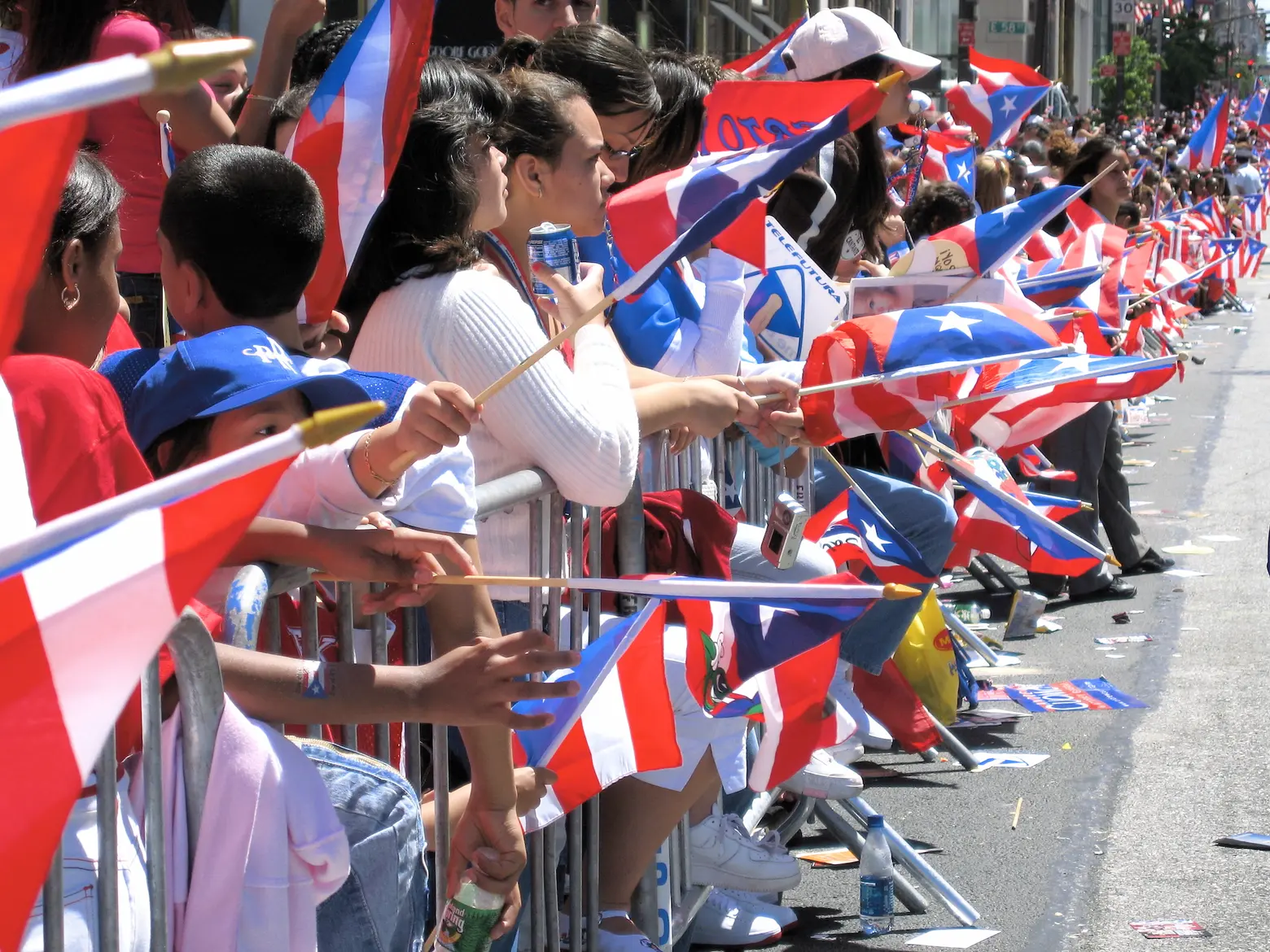
Photo via Flickr cc
The tumult and unrest in the streets of Puerto Rico right now harken back to a time when many Puerto Rican New Yorkers were also agitating in the streets for long-overdue reform and change. One milestone in that history took place 50 years ago when several Puerto Rican activists gathered in the East Village to found the New York Chapter of the Young Lords. This began a flowering of Puerto Rican cultural and social ferment in the East Village, the legacy of which can still be seen and experienced in the neighborhood today. From Tompkins Square Park to the Nuyorican Poets Café, here are six of the most significant spots.
1. Tompkins Square Park
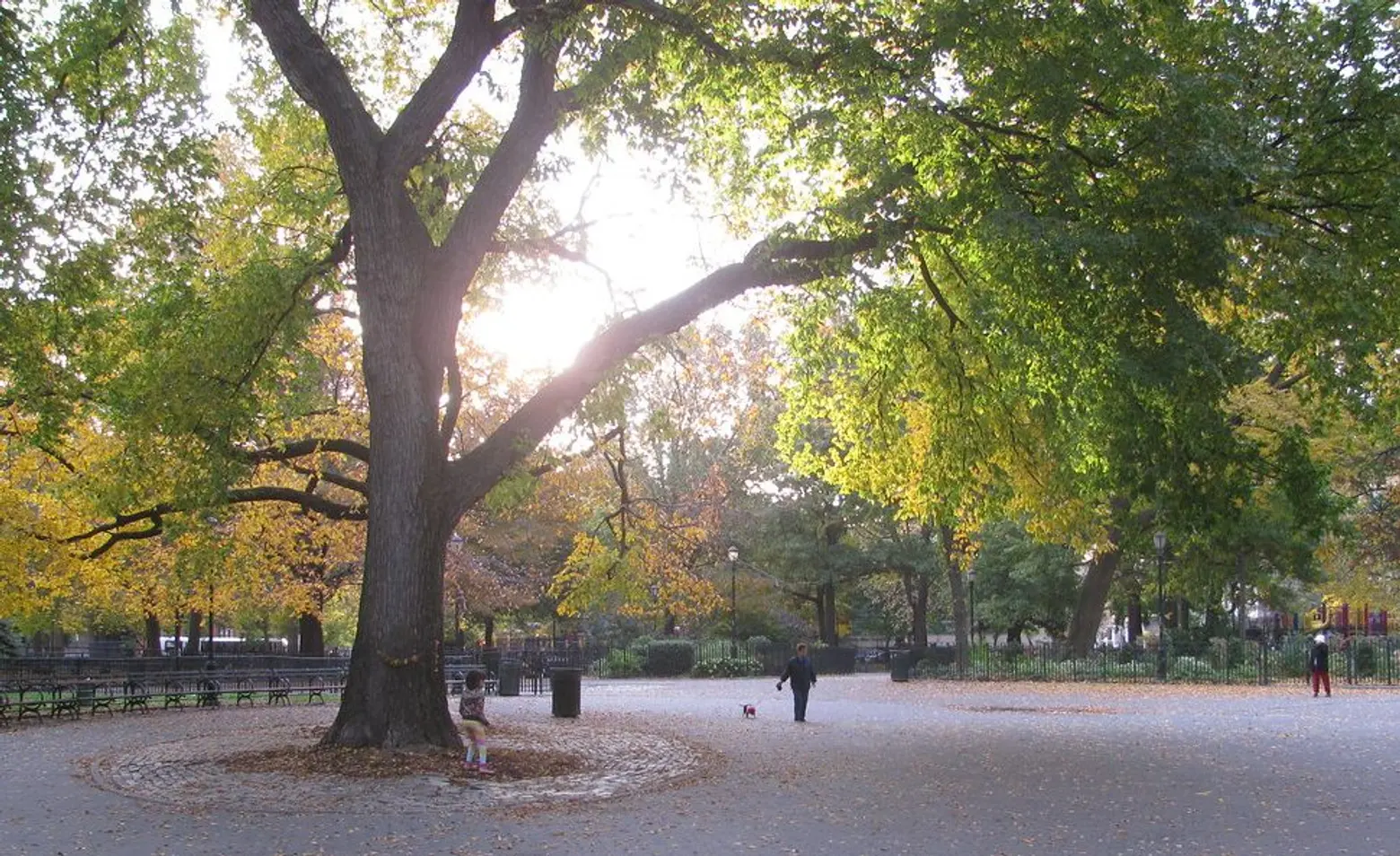
Tompkins Square Park, via Flickr cc
On July 26, 1969, a group of young revolution-minded Puerto Rican activists, mostly recent college graduates, gathered on the bandshell in Tompkins Square Park to make an announcement: they were forming a New York chapter of the Young Lords. The Lords formally originated in Chicago a year earlier, but the New York chapter, in the city with by far the largest Puerto Rican population (even more than San Juan), would end up being the organization’s most visible and in many ways most impactful chapter, eventually splitting off to form the Young Lords Party.
The group agitated for fairer treatment and equal access to opportunities and services for Puerto Ricans on the mainland, especially in light of deteriorating conditions in and the City’s increasing abandonment of services to predominantly black and Puerto Rican neighborhoods. They also offered solidarity to the independence struggle in Puerto Rico. Using the Black Panthers as a model, the group protested, organized community services, embraced and celebrated Puerto Rican culture, called for full integration of women into the movement, and supported the nascent gay rights movement.
They almost immediately initiated a “garbage offensive” in East Harlem, taking piles of refuse left festering and uncollected by the City in the middle of a sweltering summer, putting it in the middle of Third Avenue, and setting it on fire. The message: if you won’t offer us the services, protection, and facilities we deserve and others take for granted, we’ll take it or make it ourselves. This was followed by campaigns for better services at Gouverneur Hospital on the Lower East Side and Lincoln Hospital in the South Bronx, the latter involving a takeover and occupation of the hospital. In East Harlem, the group took over a church and turned it into a free medical clinic and food dispensary with music performances, poetry readings, and history lessons offered at night.
This DIY multi-disciplinary approach to liberation left a lasting legacy in the East Village, with a flowering of similar efforts and organizations in the neighborhood. The Young Lords also produced what would be some of the city’s most prominent journalists, including Juan Gonzalez, Pablo Guzman, Felipe Luciano, and (perhaps surprisingly) Geraldo Rivera.
2. Former P.S. 64/CHARAS-El Bohio Community Center, 605 East 9th Street
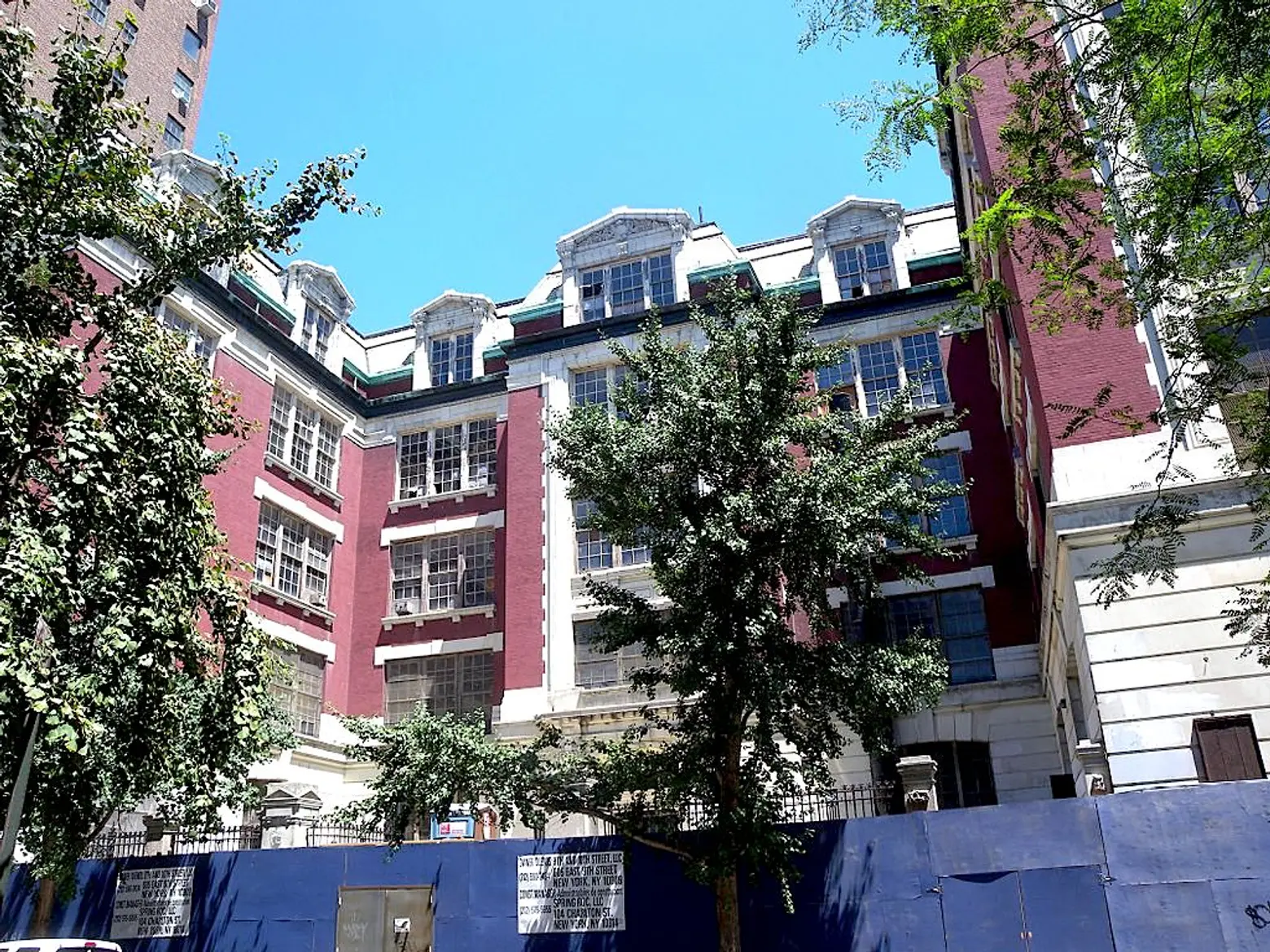
Photo via Wikimedia
One of the many manifestations of the Young Lords spirit and approach in the East Village was the transformation of a disused former public school in the East Village between Avenues B and C into a thriving community and cultural center. In 1977, at the height of the city’s fiscal crisis when waves of drugs, crime, arson, and abandonment swept through the eastern stretches of the East Village, this building was taken over by several community groups and turned into the CHARAS-El Bohio Community Center. CHARAS was an acronym for the first name of the organization’s five Puerto Rican founders: Chino, Humberto, Angelo, Roy, Anthony, and Sal.
CHARAS provided after-school and physical fitness programs for neighborhood children; hosted performances by such groups as Grupo Ache Dance Company, Latin Dance and Ballet Workshop, New Music Series, Visual Arts/ Media Programs, and Teatro Charas; housed an art gallery, La Galeria en El Bohío, and a theater, Teatro La Terraza; provided studio space for such artists as Maria Dominguez; and ran a film series out of what had been the school’s gymnasium.
While not exclusively geared towards Puerto Rican culture or residents, the space was particularly appreciated by Puerto Rican and other Latinx artists who felt overlooked by mainstream galleries and performance spaces or wanted a venue that specifically promoted Puerto Rican or Latinx culture. CHARAS provided an early launching pad for artists as diverse as John Leguizamo, John Sayles, Luis Guzman, Todd Haynes, and Spike Lee.
In 1998, Mayor Giuliani sold the building to a developer and CHARAS was finally evicted in 2001. The building has remained empty since the group was forced out and has been stripped of ornament and allowed to rot, deteriorate, and remain open to the elements by the developer owner. CHARAS co-founder Chino Garcia and local politicians including former City Councilmembers Margarita Lopez and Rosie Mendez have championed the return of the building to community use.
3. Nuyorican Poets Café, 236 East 3rd Street
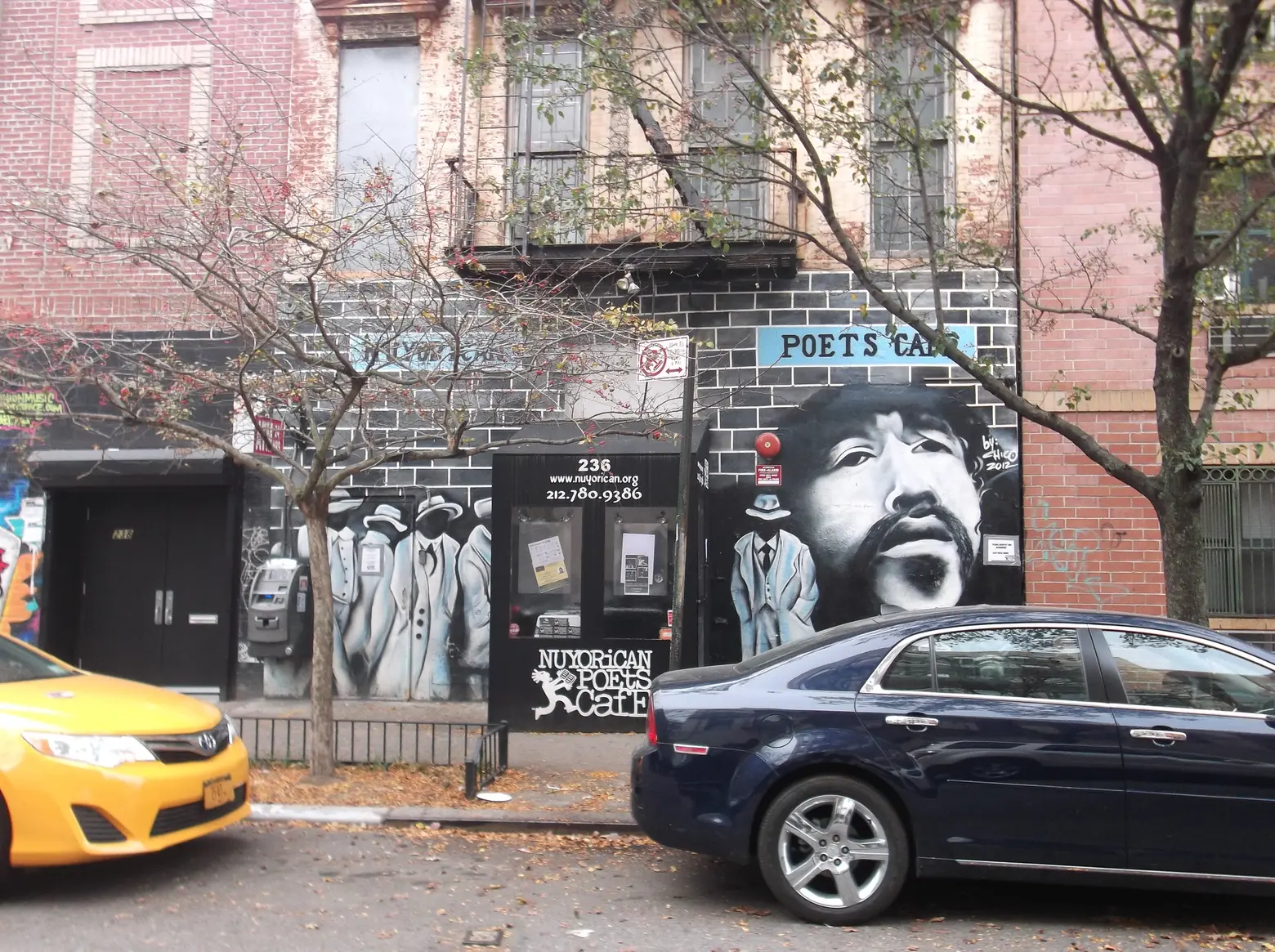 The Nuyorican Poets Café at 236 East 3rd Street via Flickr cc
The Nuyorican Poets Café at 236 East 3rd Street via Flickr cc
Founded in 1973, the Nuyorican Poets Café was originally located at 505 East 6th Street, but since 1981 has been found at 236 East 3rd Street in a five-story tenement the organizations now owns. Co-founded by writers Miguel Algarin, Pedro Pietri, Miguel Pinero, Bimbo Rivas, and Lucky Cienfuegos, the venture began operating informally out of the living room of Algarin’s apartment before finding a home at an East 6thStreet pub.
Algarin originated the use of the term Nuyorican to describe a cultural movement specific to people of Puerto Rican descent in New York City, which combined elements of poetry, music, hip hop, video, visual arts, comedy, and theater. In describing the café’s mission, Algarin said, “We must listen to one another. We must respect one another’s habits and we must share the truth and the integrity that the voice of the poet so generously provides.”
The Nuyorican Poets Café is particularly known for its poetry slams, a form it helped popularize, and for giving access to young artists, especially those who might not have other outlets or opportunities to perform. Allen Ginsberg, a regular at Nuyorican Poets Cafe, called it “the most integrated place on the planet,” noting the racial, gender, and sexuality diversity of the poets and audience, reflecting the organization’s ethos of inclusivity and giving voice to the voiceless.
4. Loisaida Avenue and Festival, Avenue C
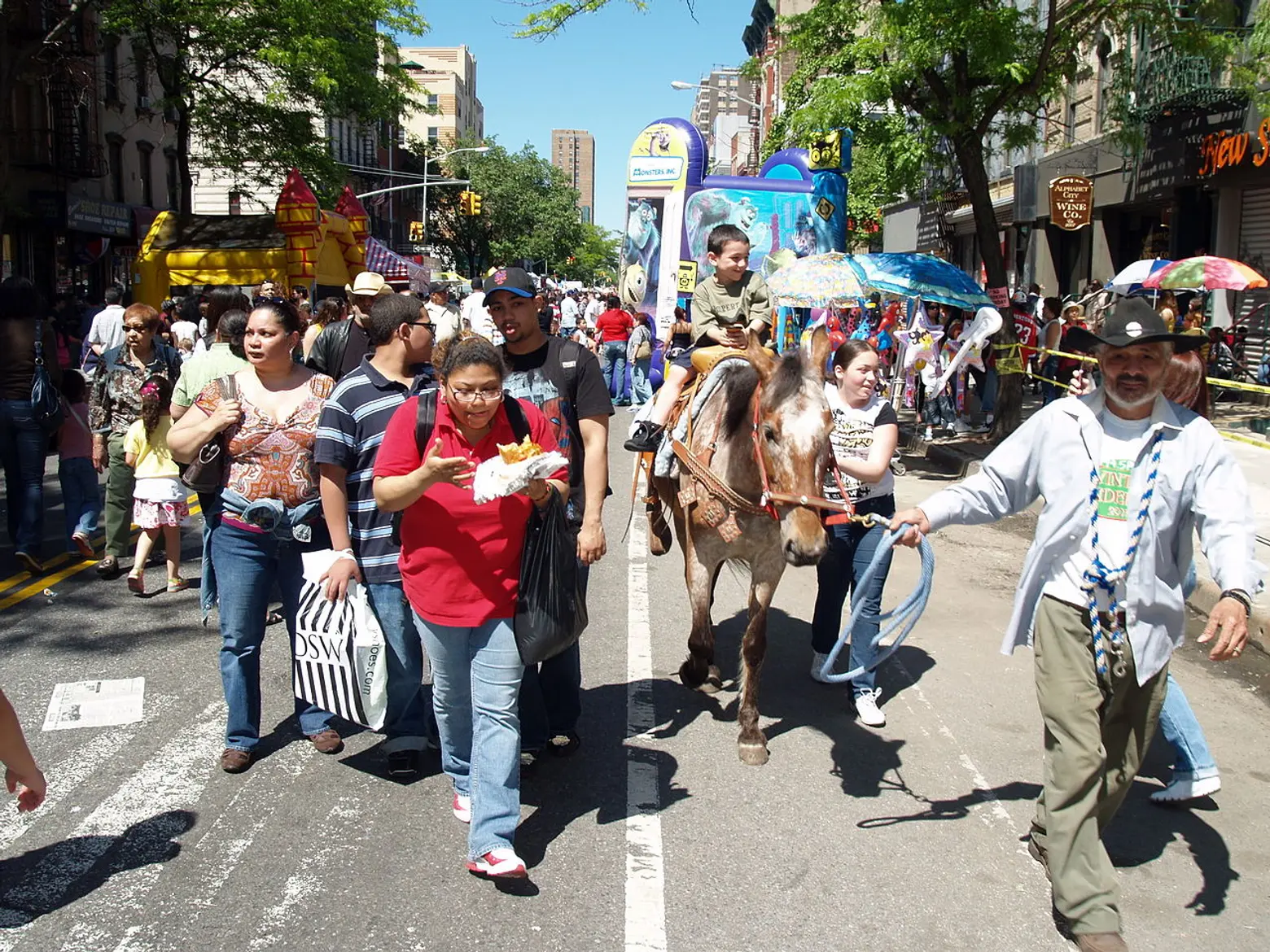 The Loisaida Festival, via Wiki Commons
The Loisaida Festival, via Wiki Commons
Loisaida was a Spanglish name for the Lower East Side, connoting the Puerto Rican and Latinx community which have had a significant presence there since the mid-20th century. The term became popularized by Bimbo Rivas’ 1974 poem, Lower East Side, an English and Spanish ode to the neighborhood he called home, in which he proudly proclaims “Loisaida I love you.”
Avenue C forms the central spine of the East Village Loisaida community, a status which was formally recognized in 1987 with the secondary renaming of the street as Loisaida Avenue. Since that same year, on the Sunday before Memorial Day, the avenue has hosted the Loisaida Festival, a community-wide celebration of the neighborhood’s Puerto Rican and Latinx culture.
5. La Lucha Continua Murals, Avenue C between 8th and 9th Streets
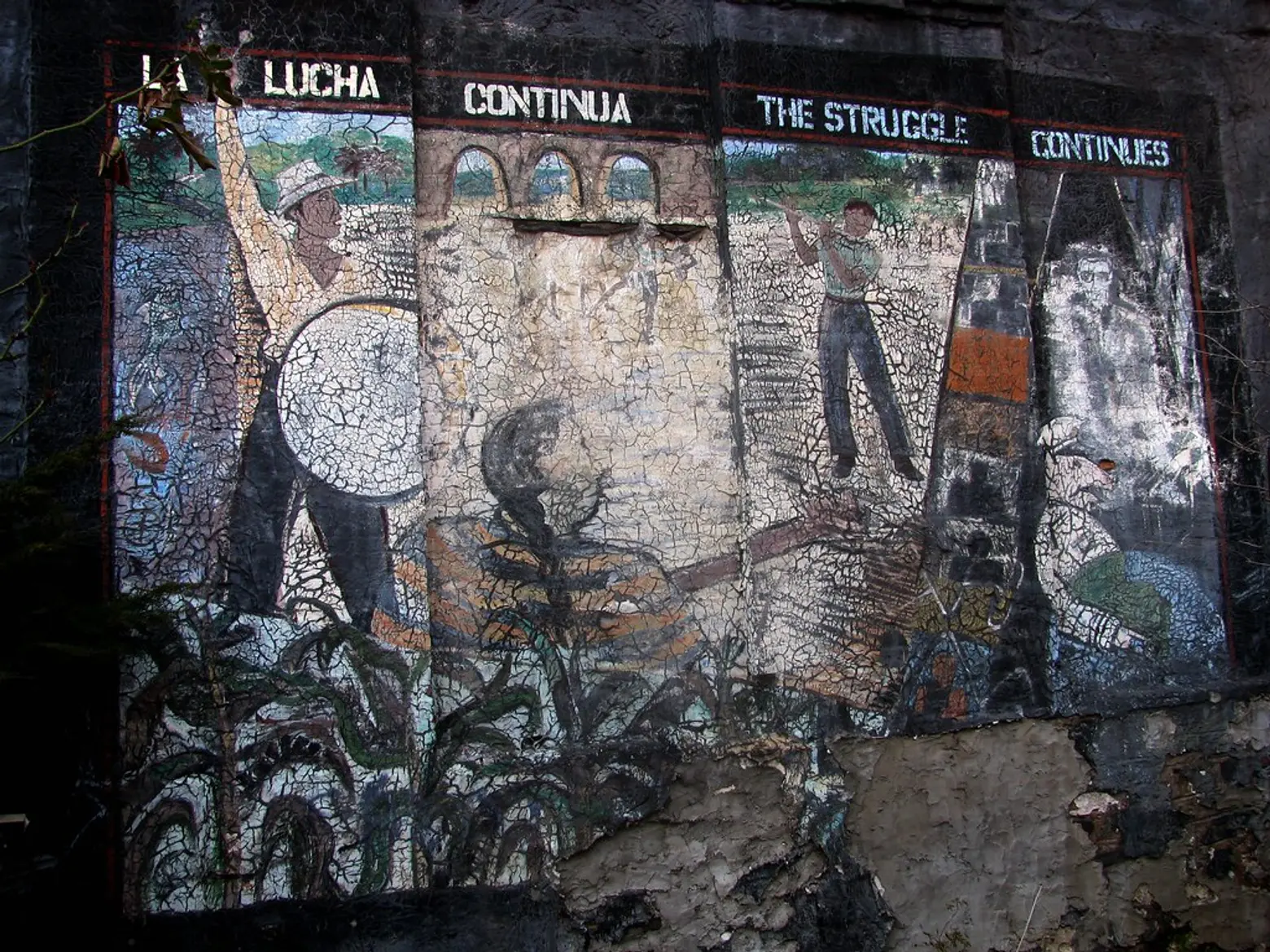 The murals in 2011, via Flickr cc
The murals in 2011, via Flickr cc
In 1985, 35 “activist artists” gathered to create 26 political murals on the side of several vacant buildings overlooking the La Plaza Cultural Community Garden on the southwest corner of Avenue C and 9th Street, a reclaimed vacant lot that had been turned into a refuge for DIY local artists, with cans and plastic bottles transformed into explosions of flowers. The murals, collectively known as “La Lucha Continua,” or “The Struggle Continues,” addressed six themes: gentrification, police brutality, women’s issues, U.S. interventions in Latin America, apartheid in South Africa, and immigration.
Much about the area has changed since the project began almost 35 years ago. The buildings are no longer abandoned, and only two of the murals remain, their paint cracked and faded. The garden is undergoing a renovation with some of the artwork being moved to and restored off-site at the nearby Loisaida Center (see below). The two remaining murals, though a pale shadow of their former selves, are still visible, conveying the same powerful message so relevant to this community three-and-a-half decades ago.
6. Loisaida Center, 710 East 9th Street
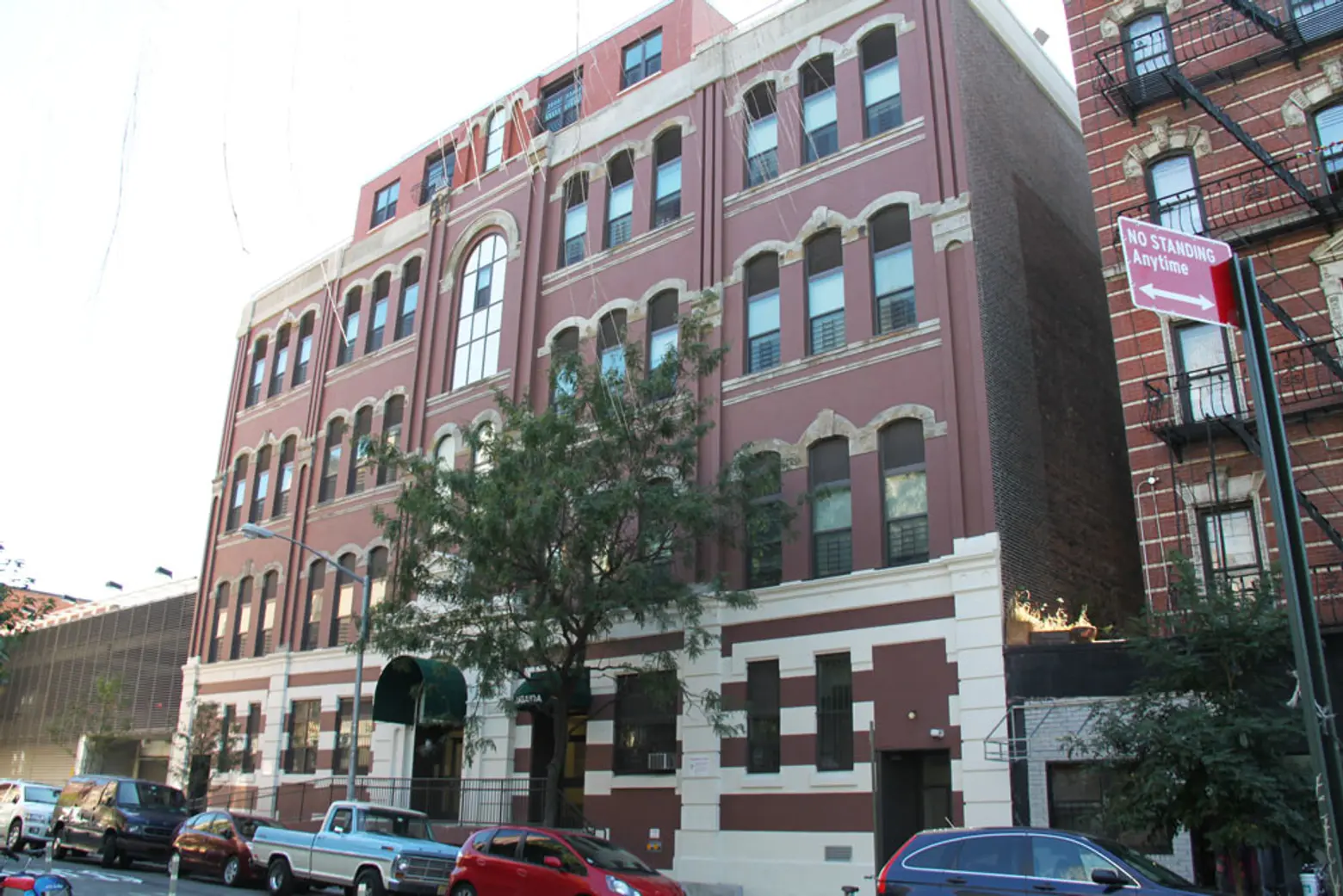 A photo of 710 East 9th Street today, courtesy of Village Preservation
A photo of 710 East 9th Street today, courtesy of Village Preservation
While CHARAS has been out of its abandoned school building for nearly two decades, the Loisaida Center continues to thrive in the former Grammar School No. 36 between Avenues C and D, originally built in 1876. According to the group’s website, it began as a grassroots movement led by Puerto Rican activists and Hispanic residents of the neighborhood in the mid-1970s to combat the effects of rampant violence, drugs, gangs, and poverty facing local children, youth and families. The organization was formally incorporated in 1978 with the mission of addressing the serious economic and social disenfranchisement of poor and low-income Latinx residents, with employment and training opportunities, comprehensive youth development initiatives, as well as neighborhood revitalization activities that positively highlighted the rich culture, heritage, and contribution of the Puerto Rican and Latin American community in this City.
It hasn’t always been smooth sailing for the grassroots organization. In 2008, they faced eviction from their city-owned building, which was to be sold for development. The community rallied around Loisaida Inc., however, and they were allowed to stay.
Since 1987, they have run the Loisaida Festival, along with a wealth of programs in education, arts, culture, and community development. In the face of a rapidly gentrifying neighborhood, they say their mission remains to address the serious economic and social disenfranchisement of poor and low-income Latinx residents, with employment and training opportunities, comprehensive youth development initiatives, and neighborhood revitalization activities that positively highlight the rich culture, heritage, and contribution of the Puerto Rican and Latin American community. The organization focuses on affordable education opportunities in cultural fields, S.T.E.A.M. (Science, Technology, Engineering, Arts and Mathematics), and design. They endeavor to celebrate the grassroots invention and immigrant spirit of the Loisaida neighborhood and Latinx cultural vitality and contributions to New York City.
RELATED:
- Latin in Manhattan: A look at early Hispanic New York
- Lin-Manuel Miranda joins effort to encourage travel between NYC and Puerto Rico
- 11 landmarks of immigration in Greenwich Village
+++
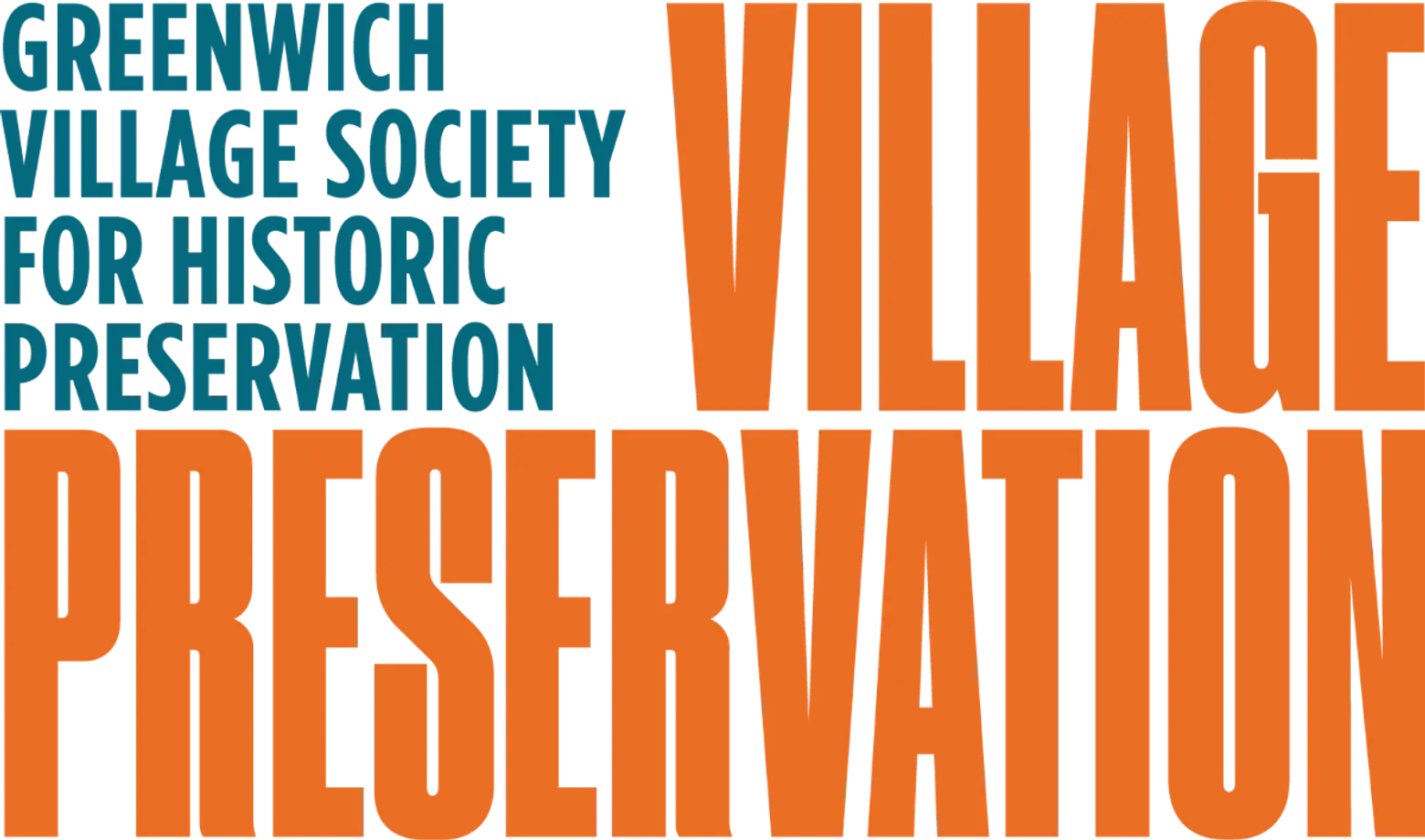
This post comes from Village Preservation. Since 1980, Village Preservation has been the community’s leading advocate for preserving the cultural and architectural heritage of Greenwich Village, the East Village, and Noho, working to prevent inappropriate development, expand landmark protection, and create programming for adults and children that promotes these neighborhoods’ unique historic features. Read more history pieces on their blog Off the Grid
